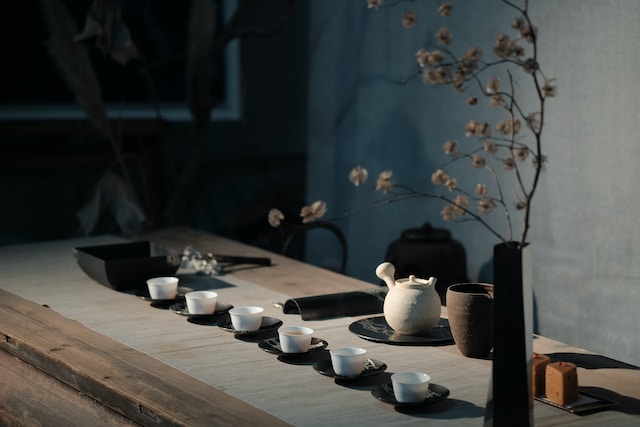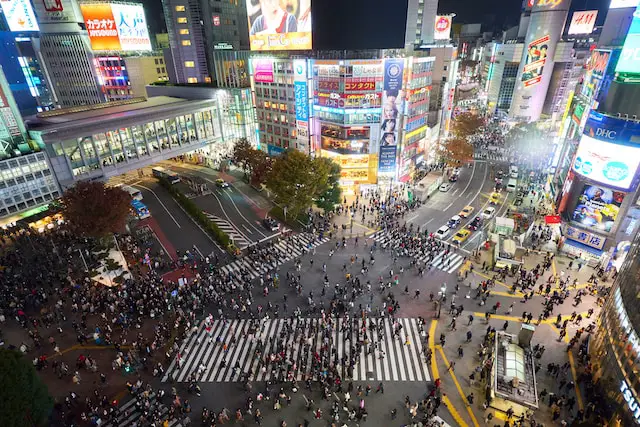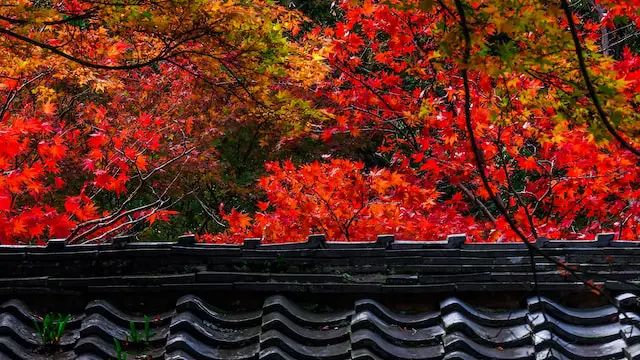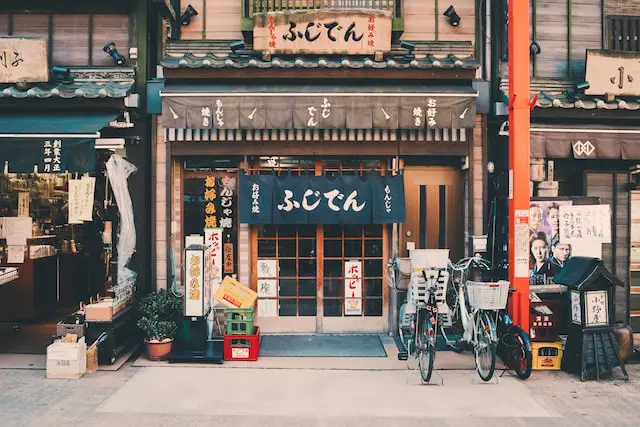
Welcome to the world of the Japanese tea ceremony, a symbolic and serene ritual deeply rooted in traditional Japanese culture. This ancient practice, found in the heart of Japan, is far more than a simple tea brewing process; it is a cultural experience in Japan that represents harmony, tranquility, and respect.
In the tea ceremony, every movement and every breath is an expression of presence and mindfulness. Often set in beautifully designed tearooms, participants experience an immersive journey into Japan’s profound cultural aesthetic. The ceremonies offer a unique window through which we can glimpse how traditional Japanese life values tranquility and simplicity.
This tea-infused voyage into Japan’s deeply rooted customs and traditions is an experience you can’t afford to miss on your next adventure. So, settle in, and let us take you through the wonderful world of the Japanese tea ceremony.
History of Japanese Tea Ceremonies
The history of the Japanese tea ceremony traces its roots back to the 9th century when tea was first introduced to Japan from China by Buddhist monks. These monks began to use tea in their religious rituals, marking the initial intertwining of tea with Japan’s Buddhism history. Its spiritual significance increased over the centuries, with tea eventually finding a highly revered place within Zen monasteries.
In the 12th century, Eisai, a monk who studied Zen Buddhism in China, returned with a new type of tea- Matcha. Eisai infused the preparation and consumption of Matcha with Zen philosophies, laying the foundation of the simple yet profound ceremony we witness today.
The 16th-century saw the influence of Sen no Rikyū, a tea master who refined the ceremony with principles of harmony, respect, purity, and tranquility. He revolutionized the idea of “Wabi-cha”, emphasizing rustic simplicity and a direct connection with nature. Rikyu’s ideals became the cornerstones of the Japanese tea ceremony, making him one of the most influential figures in its history.
With time, the tea ceremony transcended the confines of monasteries and aristocratic circles, becoming an integral part of the daily life of ordinary Japanese people. It evolved into a spiritual journey that beautifully expressed the very essence of traditional Japanese culture – the pursuit of tranquillity and harmony in every aspect of life.
Understanding the Philosophy behind the Ceremony
The philosophy of the Japanese tea ceremony is profoundly influenced by Zen Buddhism and focuses on simplicity, respect, and tranquility. One of the central concepts in this traditional Japanese culture is ‘Ichi-go ichi-e’, which loosely translates to ‘one time, one meeting’. It emphasizes the ephemeral nature of life and encourages the participants to cherish each encounter as it will never recur in the exact same way.
Other principles imbued in the ceremony include ‘Wabi-sabi’, an appreciation of the imperfect, impermanent and incomplete. The tea ceremony embodies this aesthetic in a multitude of ways, not least in the preparation and presentation of the tea. Wabi-sabi can also be observed in the earthen, simple tea bowls purposefully chosen for their imperfections, as a symbol of the beauty found in the natural world’s inherent impermanence.
Zen Buddhism heavily underscores the ceremony’s ethos. Zen emphasizes direct, intuitive insight into transcendental truth beyond rational thought or intellectual study. Many aspects of the tea making process, from the preciseness of the preparation to the respect shown through specific movements, seek to attain a state of mindfulness and presence.
The philosophy of the Japanese tea ceremony extends far beyond the simple act of drinking tea. It serves as a reflective culmination of traditional Japanese culture, Zen Buddhism, and a unique cultural experience that goes far beyond a tourist attraction or simple culinary event.
Preparation for Attending a Tea Ceremony
Attending a traditional Japanese tea ceremony can be an exciting cultural experience in Japan. Nonetheless, there are a few things you should know about Japanese etiquette before you attend.
First off, remember that the tea ceremony is not just about drinking tea but a cultural ritual. Therefore, make sure to dress traditionally or at least semi-formally. The traditional Japanese dress code typically involves a kimono, but if you’re a foreigner, wearing clean, subdued clothing will be acceptable. Avoid bright, flashy colors.
Upon attending the ceremony, show respect for the process and the place. When you enter, bow respectfully. Once inside, refrain from touching the walls or decorations. These customs are a crucial part of the preparing for Japanese tea ceremony.
Remember to switch off all electronic devices or put them on silent mode. During the ceremony, you are required to sit in the seiza position. This seated posture may feel uncomfortable initially, especially if you’re not used to it. Practice beforehand or at least be prepared for it. Do not worry or feel apprehensive though, as hosts are usually understanding of foreigners who may not be familiar with the customs.
Lastly, anticipate what to do during the ceremony itself. You’ll be guided largely by the host and the other guests. Just follow their lead, and if you’ve read this far, you’re probably prepared enough already!
In conclusion, attending a tea ceremony might seem daunting at first, especially for foreigners who have never experienced traditional Japanese customs. However, with a little preparation and knowledge of Japanese etiquette, you will be well on your way to a rewarding cultural experience of a lifetime.
Step-by-Step Guide on the Ceremony Process
When one considers the beauty of the Japanese tea making process, it’s understandable that it is frequently seen as high art as well as a form of meditation. Familiarising yourself with the ceremony process is integral to delving deeper into the tradition of this enduring cultural experience in Japan.
Once guests arrive, the host provides them with traditional sweets to offset the bitterness of the tea they are about to enjoy. The tea utensils, already meticulously cleaned and prepared, are displayed for the guests to admire before being used in the ceremony.
The soul of the tea ceremony lies in the theme of “Ichi-go ichi-e”, translating as “one time, one meeting”. This conveys the significance of each encounter, believing it can never be replicated exactly. It’s also mirrored in the delicate host-guest interaction, with the guests expected to admire every object and action carried out by the host.
The host then begins the methodical process of making the tea. They first rinse their utensils with hot water, relieving any prior impurities. The whisk, scoop, and tea bowl are then used to prepare the matcha tea. This process is carefully choreographed – a delicate dance of precise movements reflecting the spiritual significance embedded in Japan’s Buddhism history.
Upon completion, the host presents the tea bowl to the guest, who receives it with gratitude, takes a sip, compliments the host, then passes the bowl to the next guest. This pattern repeats until each guest has been served. Final appreciations are shared before the ceremony closes, culminating a unique, meditative experience – the heart of the Japanese tea ceremony.
If you ever find yourself in Japan, this cultural experience is certainly worth not only to witness but to participate in. The blend of ritual and art, history and philosophy, creates an unforgettable experience that truly captures the essence of traditional Japanese culture.
Discover The Most Famous Tea Houses In Japan
Japan, steeped in tradition and known for its exquisite culture, is home to some of the most historic and beautiful tea houses. A visit to these places promises an authentic and splendid cultural experience.
In the vibrant city of Tokyo, Happo-en stands out. This stunning venue tucked away in the busy metropolis offers an oasis of tranquility. The traditional Japanese garden, brimming with bonsai trees and cherry blossom, serves as an idyllic backdrop for their tea ceremonies.
Kyoto, boasting a rich history, provides a plethora of choices. Camellia Garden and Fushin-an are just a couple of noteworthy traditional tea houses. Fushin-an, associated with the Omotesenke school of tea, is the very epitome of Kyoto’s tea culture, brimming with serenity and elegance. On the other hand, Camellia Garden provides the unique chance to experience a tea ceremony amidst a stunning private garden setting.
If you’re in Osaka, consider visiting Osaka Chakai, a peaceful retreat situated in a bustling shopping district. Here, you can enjoy a relaxing tea ceremony after a day of exploring the city.
By taking part in these tea ceremonies, you will not only enjoy the calming act of tea drinking but also appreciate the spiritual depth and peace that comes with it. So when you embark on your journey through Japan, don’t forget to make time for this unique cultural experience! Make your visit to these cities richer and more meaningful with a stop at one of these iconic tea houses.
Traditional Tea Ceremony Versus Modern Tea Experiences
There is a breadth of opportunity for every traveler seeking a unique cultural experience in Japan, particularly through the lens of tea. When discussing traditional Japanese tea ceremonies, the conversation instinctively brings to mind a serene setting in a historic teahouse, a gentle host robed in a kimono, and the rhythmic, meditative process of serving matcha tea.
This richly traditional scene starkly contrasts with the bustling atmosphere of modern Japanese tea houses where visitors gather frequently to enjoy matcha in a café-like setting. The quiet, spiritual aspect of the traditional tea ceremony might give way to lively conversations and contemporary interior design. Yet, the spirit of “ichi-go ichi-e” or “one time, one meeting” still manages to thrive in both settings.
Modern tea experiences, like those in matcha cafés, marry the historic significance of tea with contemporary tastes. You get to experience matcha tea in various forms such as ice cream, lattes, or pastries. Being modern does not mean abandoning tradition entirely; it’s a blending, bringing the essence of traditional Japanese culture into current times. This is a huge part of the appeal for younger audiences and foreign visitors alike.
The choice between a traditional Japanese tea ceremony and a visit to a modern Japanese tea house boils down to personal preference. If you yearn for tranquil contemplation, a traditional tea ceremony is a must. For those desiring a more casual, yet equally engaging tea experience, a modern matcha café would be an excellent choice. What matters above all is the chance to experience Japan in a uniquely personal way, opening new dialogues between the past and present.
Conclusion
The Japanese tea ceremony is indeed one of the most incredible experiences one can have in their lifetime. It’s not just about resembling a typical cultural experience in Japan, but subtly synthesizes the great beauty of traditional Japanese culture. This captivating ceremony stems from history, highlighting the spiritual significance of the tea ceremony in Japan’s Buddhism history.
Acknowledging the philosophy of the Japanese tea ceremony brings an understanding of the unique aspects of ichi-go ichi-e and the acceptance of imperfections seen in wabi-sabi. The Zen Buddhism influence on the ceremony’s values is very clear and insightful. Participating in this ceremony also means adhering to Japanese etiquette, including the traditional Japanese dress code. The process of the tea ceremony puts a great emphasis on the importance of host-guest interaction, making it a cultural experience that seems ‘once in a lifetime’ for every occurrence.
We’ve explored some of the best tea houses in Japan, where you can further immerse in this unique cultural experience. Whether in the bustling city of Tokyo, the historic city of Kyoto or beyond, you’ll find spots that have kept this age-old tradition alive through the generations.
Interestingly, a surge of modern tea experiences, like matcha cafes, can be noticed in Japan’s contemporary scene. Although they stand as a contrast to the traditional tea ceremony, they too, echo a distinct Japanese cultural vibe that bridges the gap between the old and the new.
So, whether you’re keen on the spiritual path or just searching for unique travel experiences, exploring this traditional tea ceremony is a way to experience Japan that you don’t want to miss!



